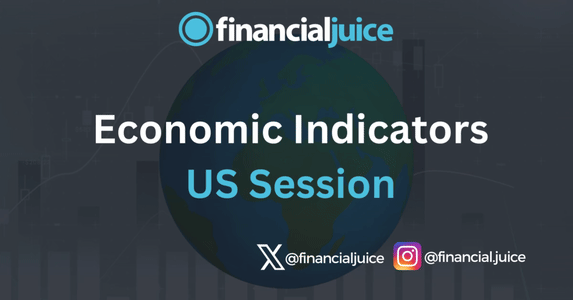
Week Ahead: Economic Indicators (US)
Hey, Traders!
For the March 25th week, here is a list of all of the major economic indicators being released during the US Session, with a brief synopsis of what they represent and what to possibly expect from the markets in reaction.
Monday 25th March
10:00 ET
US New Home Sales
US New Home Sales is an economic indicator that measures the number of newly constructed homes sold during a specific time period. Published by the US Census Bureau, this data provides insights into the demand for newly built homes, reflecting trends in the housing market.
What to Expect
Increasing new home sales may suggest positive economic conditions, while a decline may indicate challenges in the housing sector. This release is unlikely to move the market on its own, absent a large deviation from expectations. Having said that, if the release shows higher-than-expected New Home sales, analysts will contend with the potential inflationary pressures caused by increased consumer demand, as well as the increased chance of a soft landing for the economy powered by a resilient consumer.
Tuesday 26th March
08:30 ET
US Durable Goods
US Durable Goods represents the change in the value of orders for durable goods from domestic manufacturers in the United States. This economic indicator, reported by the US Census Bureau, serves as a gauge of short-term fluctuations in business investment. Positive changes signify increasing orders, reflecting potential economic growth and heightened confidence among businesses, while negative changes may indicate declining demand or economic uncertainty.
What to Expect
Greater than expected US Durable Goods data could result in dollar strength and US stock weakness, as this suggests that demand for durable goods could be ignoring the effects of monetary policy from the Fed, and may have implications for other areas of the economy. However, if it comes in lower, that could mean, durable goods is reacting how policymakers desire.
US CB Consumer Confidence
US Consumer Confidence measures the optimism or pessimism among consumers about the overall economic conditions and their personal financial situations. Compiled and released by the Conference Board through consumer surveys, the index comprises two key components: the Present Situation Index, reflecting current perceptions of economic and employment conditions, and the Expectations Index, indicating consumers’ outlook for the short-term future. A higher index generally signals increased consumer optimism, potentially leading to higher spending, while a lower index may suggest heightened pessimism and potential decreases in consumer spending.
What to Expect
Considering the current position of the US economy, traders must weigh two scenarios when assessing this data. Lower than expected data could indicate consumers are spending less than they otherwise would, potentially helping inflation’s downward trend. Conversely, if sentiment turns out to be higher than expected, this may indicate that consumers are happy about the financial climate and may spend more money, which could aid a soft landing.
Wednesday 27th March
10:30 ET
Weekly EIA Crude Oil Inventories
The US Weekly Energy Information Administration Crude Oil Inventories report provides information on the total stockpile of crude oil in the United States. It includes data on the changes in crude oil inventories, indicating whether there has been an increase or decrease in the amount of oil held in storage. This report is crucial for assessing supply and demand dynamics in the oil market and can influence oil prices.
What to Expect
A significant build-up in inventories may indicate oversupply, putting downward pressure on prices, while a decline may suggest increased demand, potentially impacting prices in the opposite direction.
Thursday 28th March
08:30 ET
US Weekly Initial & Continued Jobless Claims
The US Weekly Initial Jobless Claims report provides the number of people who filed for unemployment benefits for the first time during the past week, serving as a measure of new layoffs. This indicator is a key gauge of the labor market’s health and economic activity, with lower numbers suggesting fewer layoffs and a stronger job market. Continued Jobless Claims, on the other hand, represent the number of people already receiving unemployment benefits. This figure helps gauge the longer-term employment situation and provides insight into how easily displaced workers are finding new employment. Both metrics are monitored by investors, policymakers, and economists because they offer real-time insights into labor market conditions and, by extension, the overall health of the economy.
What to Expect
Higher jobless claims indicate a higher unemployment rate. The FOMC have noted that they see a higher unemployment rate to be in line with inflation’s descent back to the 2% target. This means if Jobless Claims came in higher than expected, it could cause strength in US stocks and weakness in the dollar, as traders increase the chances of rate cuts this year.
US GDP
US Gross Domestic Product measures the total value of all goods and services produced within the United States. It serves as a comprehensive gauge of the country’s economic performance and is published by the Bureau of Economic Analysis (BEA) on a quarterly basis. GDP includes consumer spending, business investments, government expenditures, and net exports (exports minus imports).
What to Expect
Changes in GDP growth rates reflect the overall health and direction of the US economy, influencing policy decisions and providing insights into economic trends. In terms of the market’s potential reaction to this data point, this is tricky to gauge at the current stage of the economic cycle. On one hand, a higher-than-expected GDP can be seen as an upside inflation risk, as it can indicate increased demand through increased consumer and government expenditures. On the other hand, inflation is coming down towards the target despite resilient consumer demand, so a higher GDP number could also reinforce the chances for a soft landing, with inflation still returning to the target.
Canadian GDP
The Canadian Gross Domestic Product (GDP) represents the total value of all goods and services produced within Canada’s borders, serving as a metric for evaluating the country’s economic performance. Calculated through both the production and expenditure approaches, GDP provides insights into the size and growth of the Canadian economy. Reported on a quarterly and annual basis, these figures are expressed in either current or constant dollars, the latter adjusted for inflation.
What to Expect
To achieve a soft landing, Canada will be looking for a strong GDP figure, which may result in strength in the Canadian dollar and Canadian stocks.
10:00 ET
University of Michigan Sentiment Final
The University of Michigan Consumer Sentiment Index measures the confidence of US consumers in the economy. It is based on a survey that assesses consumers’ perceptions and expectations regarding their personal finances, business conditions, and overall economic prospects. A higher sentiment index indicates increased confidence, which can positively impact consumer spending and economic activity, while a lower index may suggest reduced confidence and potential economic caution.
What to Expect
Consumer sentiment is closely watched by markets to assess consumer resilience in a high-interest-rate environment. Elevated sentiment may suggest strong demand, potentially leading to inflationary pressures, but it could also signal consumer resilience, reducing recession fears. In this release, the market focus is on the 1 & 5-year inflation expectations accompanying the sentiment data. Higher inflation expectations may delay Fed rate cuts, affecting US stocks negatively and strengthening the dollar.
Friday 29th March
08:30 ET
US PCE Price Index
The US Personal Consumption Expenditures Price Index is a measure of inflation that gauges the average change in prices consumers pay for goods and services over time. Published by the Bureau of Economic Analysis (BEA), the PCE Price Index is considered a key indicator of inflationary trends in the economy. It is based on personal consumption expenditures, reflecting how households allocate their spending across various categories. While similar to the Consumer Price Index (CPI), the PCE has some methodological differences, including the treatment of healthcare and the inclusion of a broader range of expenditures. Most importantly, unlike CPI, it does not monitor a fixed basket of goods in every report and makes adjustments for the goods and services that are tracked based on consumer spending habits during the reporting period. The ‘Core’ PCE Price Index is the Fed’s preferred gauge of inflation, stripping out volatile food and energy components.
What to Expect
If PCE comes in higher than expected, this would be likely to cause markets to bet on less interest rate cuts this year. This repricing could cause weakness in US stocks, and strength in the Dollar and US Treasury yields.







